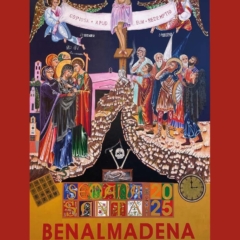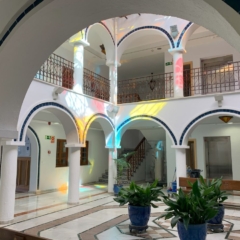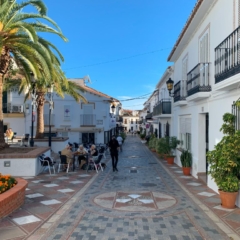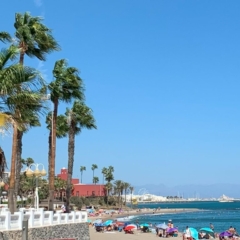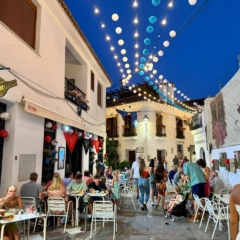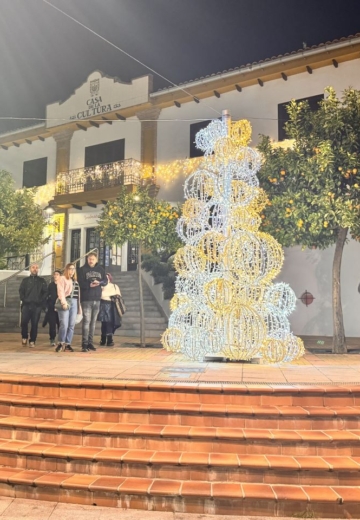Castillo Colomares – two inspiring stories

The Castillo Colomares (Colomares Castle), in Benalmadena Pueblo, is a walk-through monument in honour of the Spanish role on Cristopher Columbus’ discovery of America. It was privately funded by an individual – Dr. Esteban Martín – and built by himself and two helpers, without public money; it is purely fruit of the desire of one person to honor the memory and achievements of the explorer by retelling the story of the discovery of the New World through a highly detailed, monumental construction.
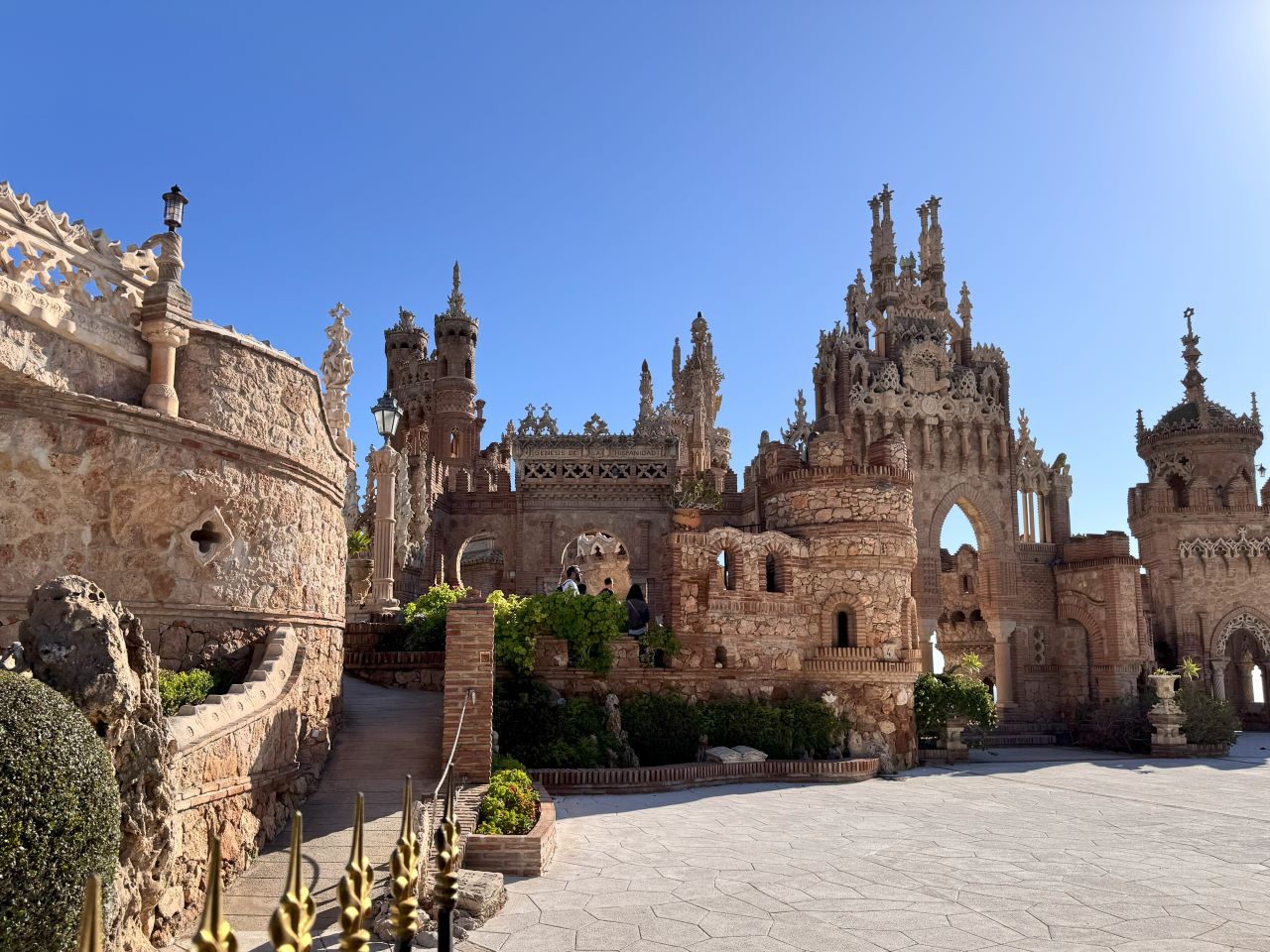
The resemblance of a castle is part of the story – it is a reminder that the exploration was only possible because of the sponsorship of the Kings of Spain, Isabel I and Ferdinand II (the Catholic Kings, considered responsible for the configuration of the present Spanish territory). The location – in Benalmadena, overlooking the sea – is also relevant, as the ships departed from Andalusian waters and most of the crew was also Andalusian. The style, a mix of neo-mudejar and gothic, tells about the Arab influence on Andalusia and of the faith of the Kings. The monument is full of symbolism waiting to be discovered.
Visiting the Castillo Monumento Colomares
You’ll find several numbers displayed along the monument, each one with a QR code. Like in a game, ou can find the QR codes, and they tell you a bit of the history that is being depicted in that part of the construction; it’s a bit of a guided visit inscribed in the castle, with several options of languages.
Before crossing the arch at Castillo Colomares
The monument can be divided into two parts, representing the periods before and after the marriage of Isabel I de Castilla and Fernando II de Aragón. The marriage itself is represented by the double-arched passage right in the center of the area, called Pórtico de la Unión (Portico of the Union). The two towers that side the portico represent each of the monarchs.
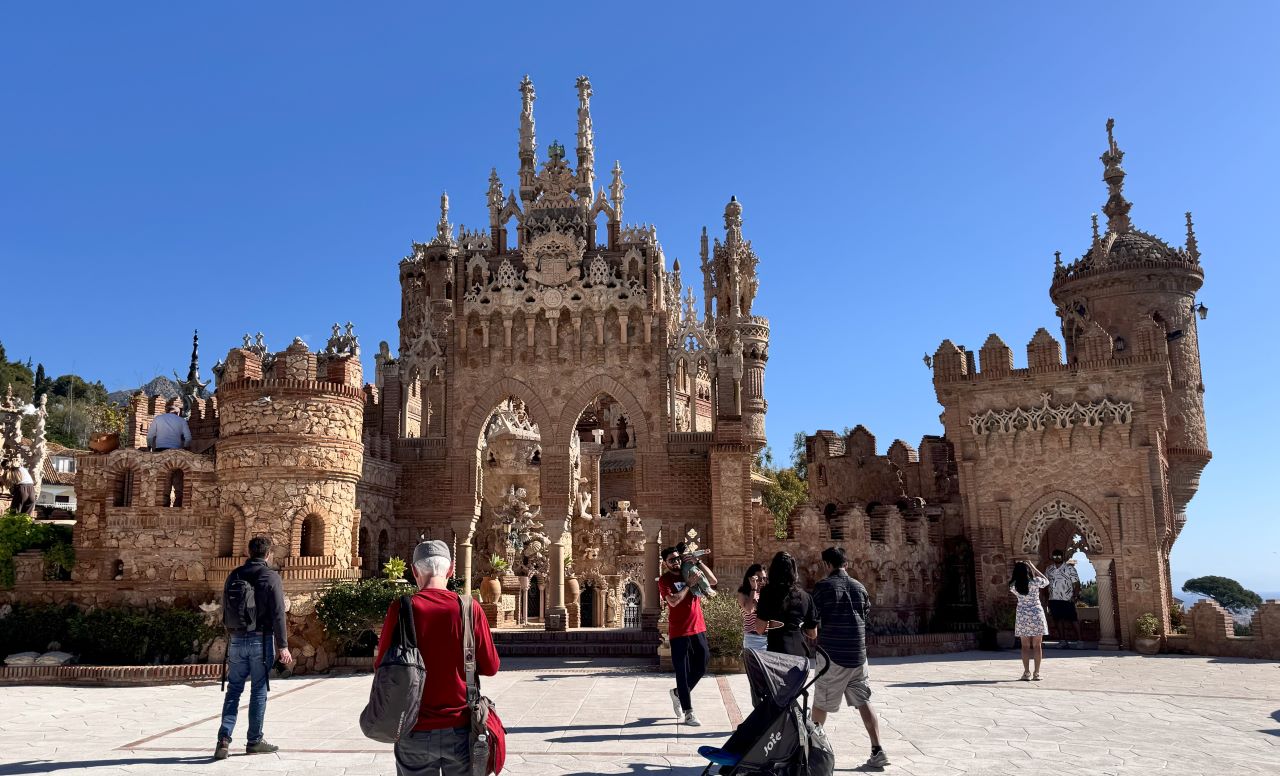
Also outside there is a fountain with a serpent, that symbolizes the foreign origin of Columbus, and two fountains with children, symbolizing both the early ages of the monarchs when they married (they were teenagers), the birth of Spain and that of the “Hispanidad” (Hispanicity), a shared cultural and linguistic identity among the many countries that originated from Columbus’ discovery.

The Arches (Portico de la Unión)
There are plenty of details on the top of the portico, and they are very intentional. In the middle, at the top, there is a greenish crown, representing the crown of Carlos V, grandson of Isabela I and Fernando II, which would expand the Spanish empire through the American continent; under the crown there is a ship, a caravel protected by wings, which represents the beginning of that American Empire.
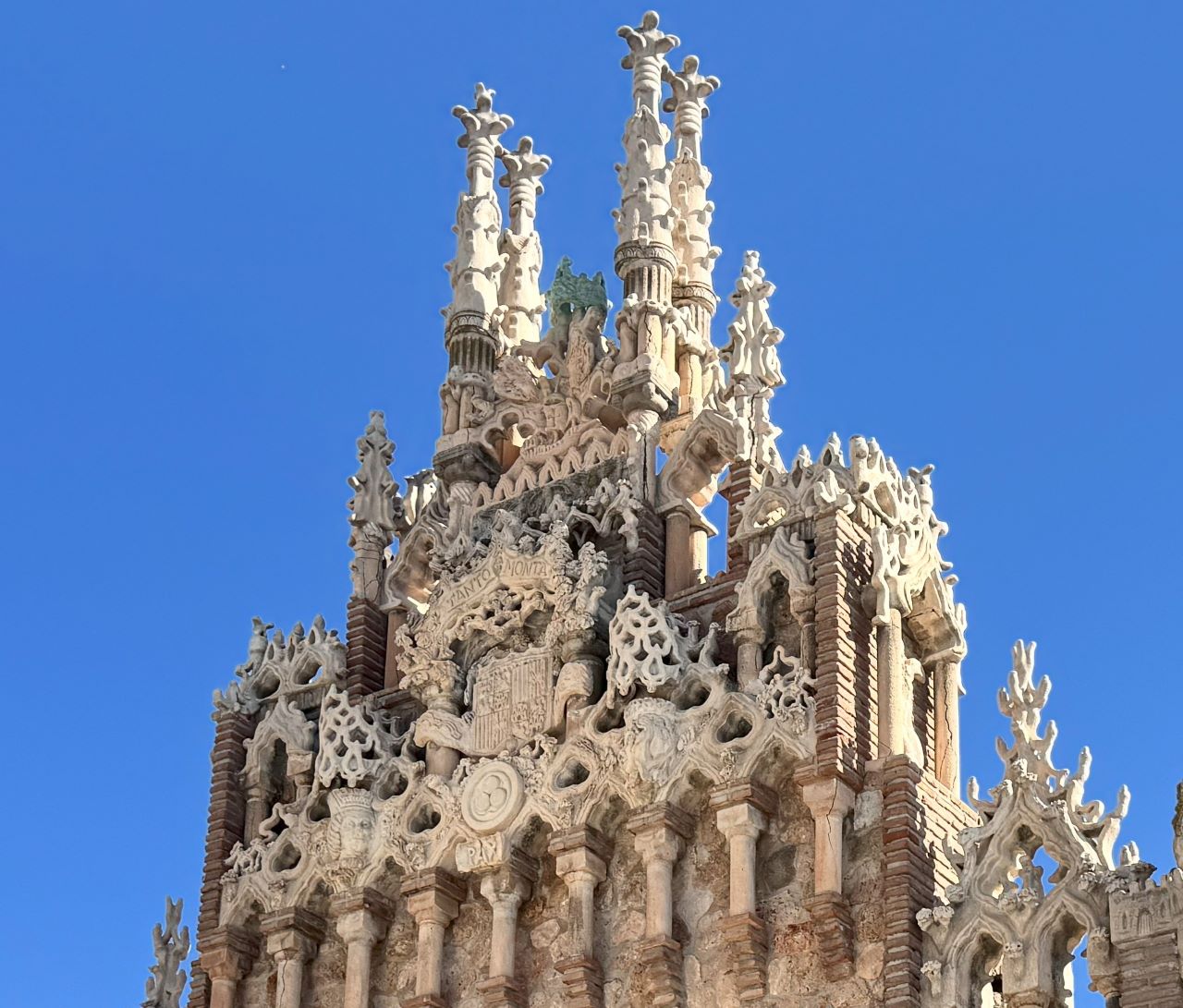
A bit under the caravel, there is a Spanish shield, with the inscription Tanto Monta on top of it. Tanto Monta was sort of the slogan of the kingdom of Isabela I and Fernando II, meaning something like “it amounts to the same”. In the context of the time, it meant that both Aragón and Castilla where now one and the same, and that both the Queen and the King where equivalent.
The patio
It’s after crossing the arch that one has a full view of the Castle from its central patio. This area is rich in beauty and detail, and the spot from which the best views of the castle are seen.
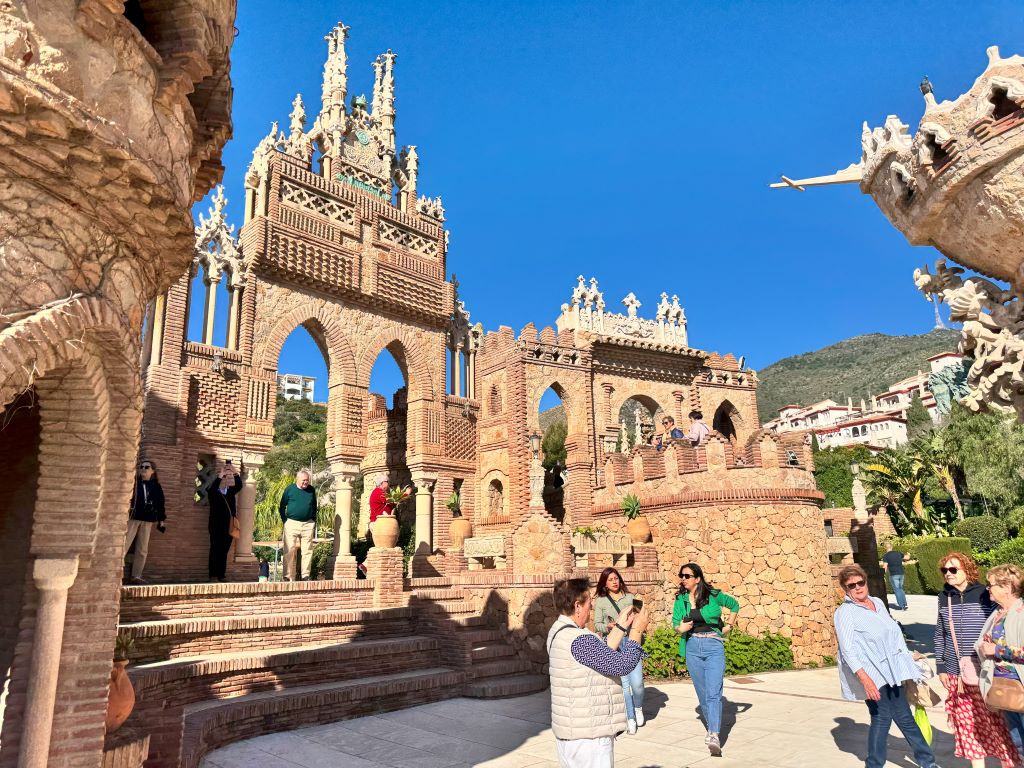
On the back of the arch (above) there are more heraldic symbols and the inscription sub umbra alarum tuarum proteggino, which means “Under the shadow of your wings, protect us”.
The castle itself is seen in the image below, with the prominent caravel Pinta in the forefront. Pinta was one of the three caravels (Santa María, Pinta and Niña) used by Columbus in his famous first expedition. Right under the caravel there is an image of a horse, a tribute to Martin Alonso Pinzon, captain of the Pinta, known as the “Pegasus of the Atlantic”.

Pinta was one of the two Caravels that made it back to Spain. The other one was Niña, which is represented inside the castle, but out of the visitable area. You can have a glimpse of it on the video below, particularly in the end, among other areas that are not open for visitation. 😉
The video above is narrated by Carlos Martín, the son of Esteban Martín (the original builder), that inherited the monument and keeps developing it. He mentions that the castle is not a hotel, nor a restaurant, but solely the fruit of his father’s wish to have a place to mark and honor Columbus, Spain and the discovery of America.
The Indies
Columbus goal was not to find a new continent, but to reach Asia, back them referred to as the “Indies”, by sailing westwards. He imagined that this would be a better and much shorter way than going around Africa, and that is what he set his sails to do once he signed the contract known as Capitulations of Santa Fe with both the King and the Queen of Spain.
The tower below symbolizes the West Indies, the Asiatic lands that Columbus wanted to reach. He believed he had arrived there till his death, even after making several trips to the new continent; he called “indians” the inhabitants of America, for that reason.

Evangelization
Having found the “Indians”, one of the goals of the monarchs was to bring them to their religion. This area of the castle, with a fountain, a pulpit and a chapel-like entrance, symbolizes that aspect of the colonization.

Santa María wreckage
On the previous image, to the right, you see the side of a ship. Do you notice a crack there? It is intentional. This is the Santa Maria ship, one of the 3 ships used on the discovery voyage, and the only one that didn’t come back to Spain. This ship is visible as soon as you enter the monument.


Santa María shipwrecked by the Santo Domingo Island (now Haiti and Dominican Republic) and its wood was used to make the first settlement in America. On the base of the monument, close to the bottom of the ship, lies a map in stone, a reproduction of Columbus map, with an arrow showing the place of the shipwreck.
Not having made back to the kingdom of Spain is the reason why Santa María sits outside the main castle area. Below, another angle of this same construction, with another visible crack.
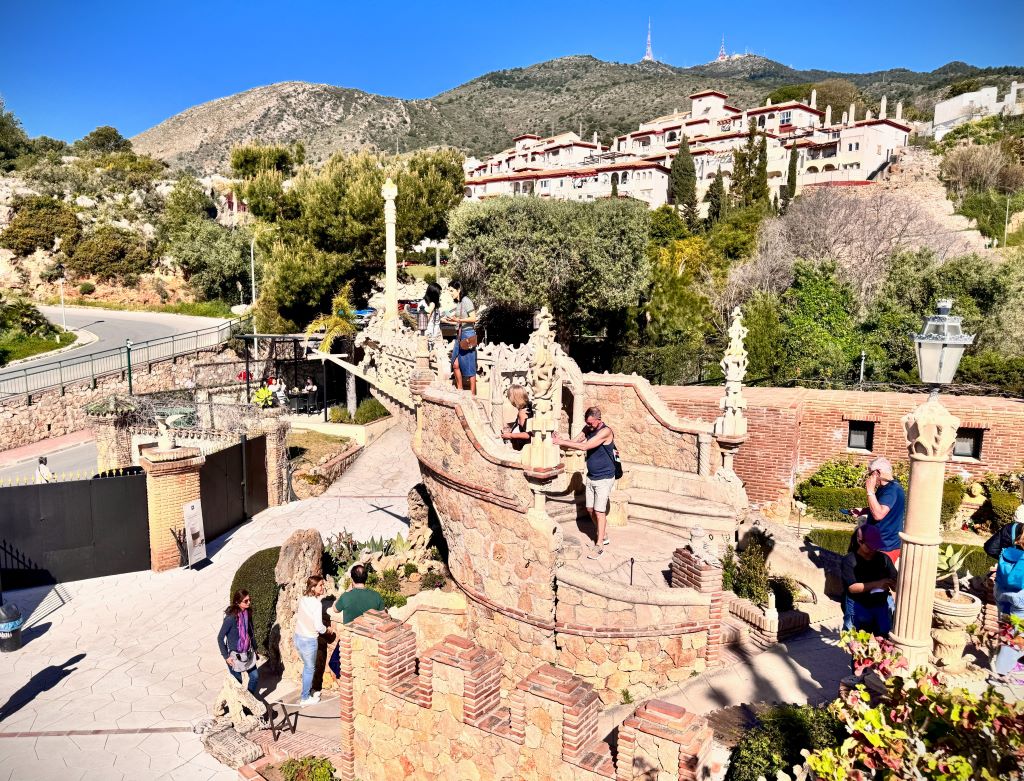
The Lighthouse of the Sailor’s Hope
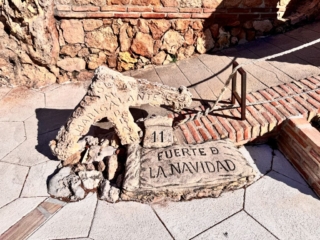
Many of the sailors that departed with Cristobal Colon perished on the journey. On the base of Santa María, there is an anchor and the inscription “Fuerte Navidad”, a mention to the fort built after the shipwreck, where 39 sailors remained by order of Columbus. These men were attacked by cannibals, native members of a tribe that Columbus referred to as the “Caribes”, and were the first explorers to perish on the new land.
Climbing up the ramp that starts by the anchor, we reach part of the monument with fountains, lights and plants. This is the lighthouse of the sailor’s hope, that symbolize the lives, the dreams of adventure and the hope of coming back home of the sailors that died to make the discovery of America happen.
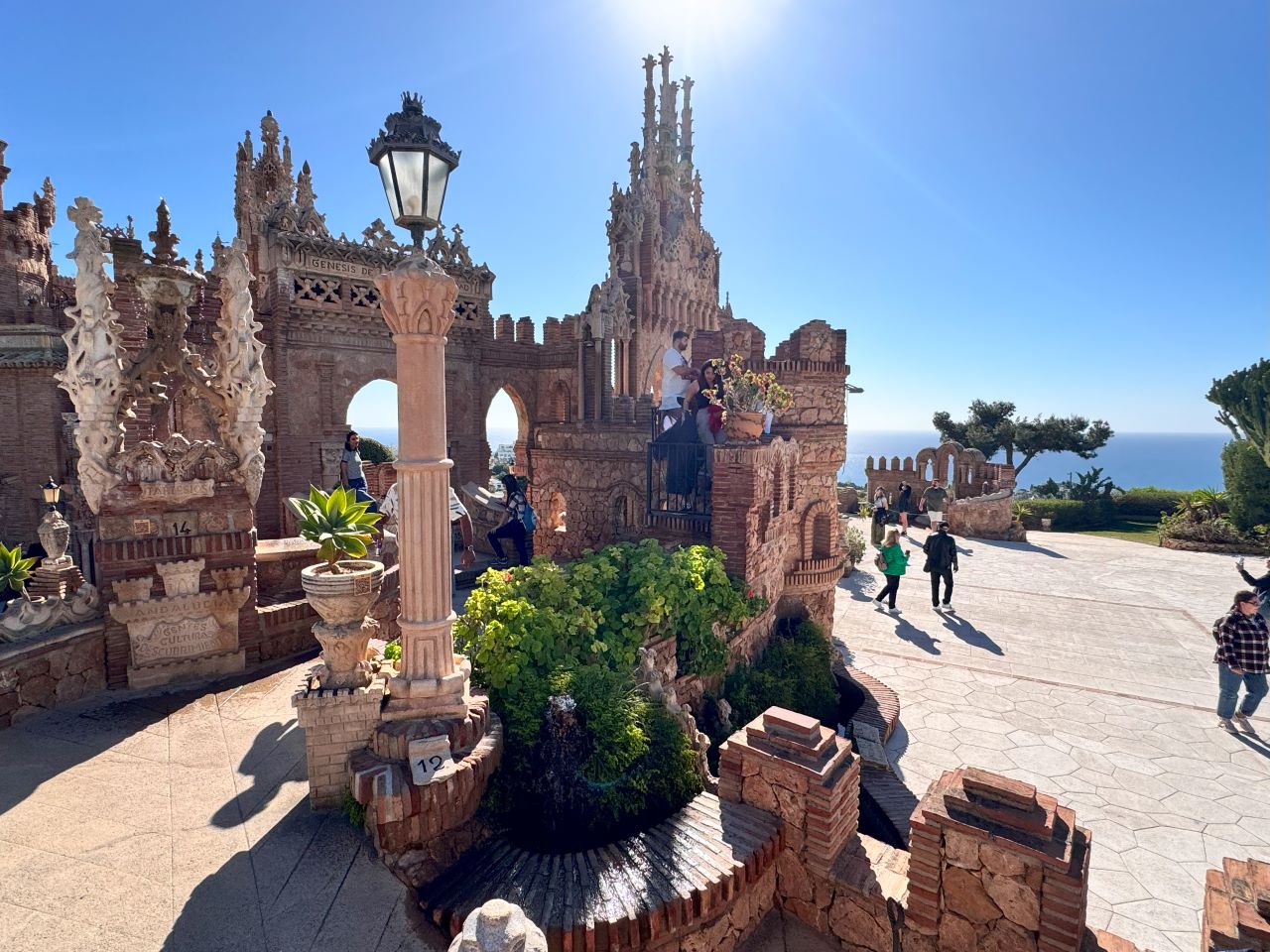
Reflections
Having reached this point, the monument sets to reflect both on the importance of Andalusia for the discovery of America and on the legacy of that discovery. It was in Andalusia, in Granada, that the contract between the Spanish Kings and Columbus was signed (Capitulationes de Santa Fe), detailing the sponsorship conditions of the initial voyage; the negotiations of that contract, that took years, happened in Cordoba; and it was from Palos, in Huelva, that the ships departed.
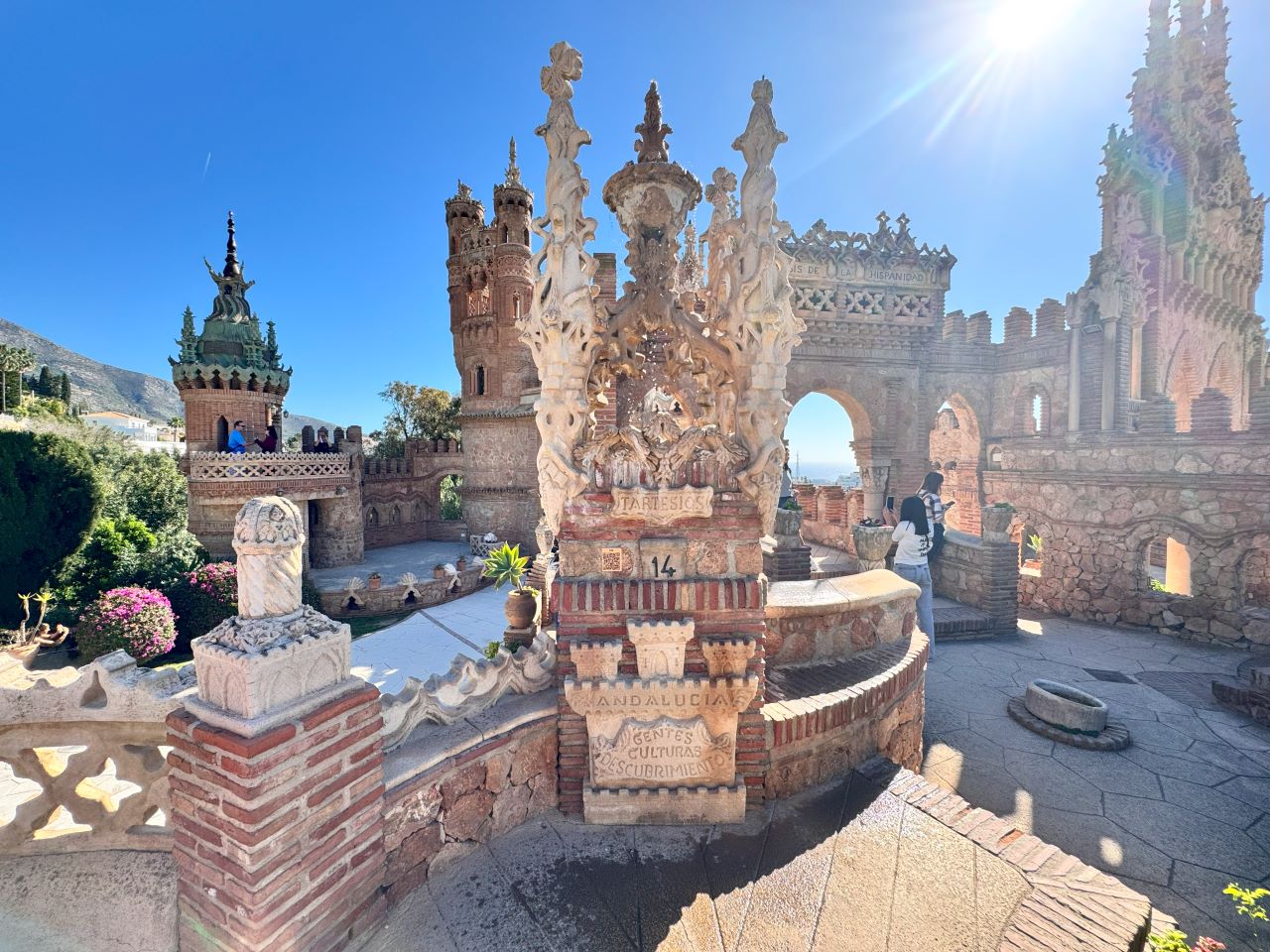
The final arch of the monument, partially visible above, proudly states “Genesis de la Hispanidad” or the geneses of the Spanish world, as an indisputable legacy of Columbus’ triumphal voyage.
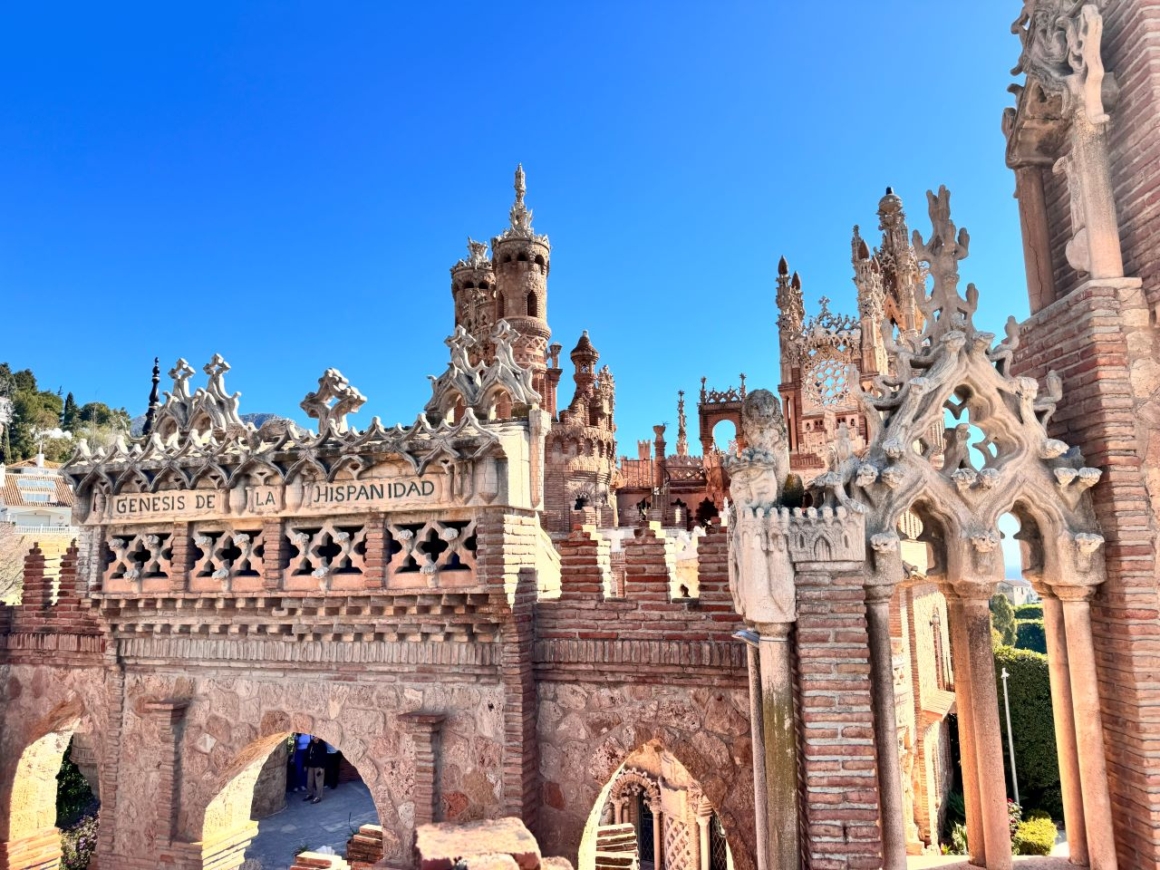
The story of the Construction
The story of the construction of this monument is as interesting as the Castle itself. In telling a story of persistence in achieving a goal, it ends up telling two: that of Columbus and the ambition to find a way to the Indies and that of a man that wanted Columbus and Spanish history to be known.
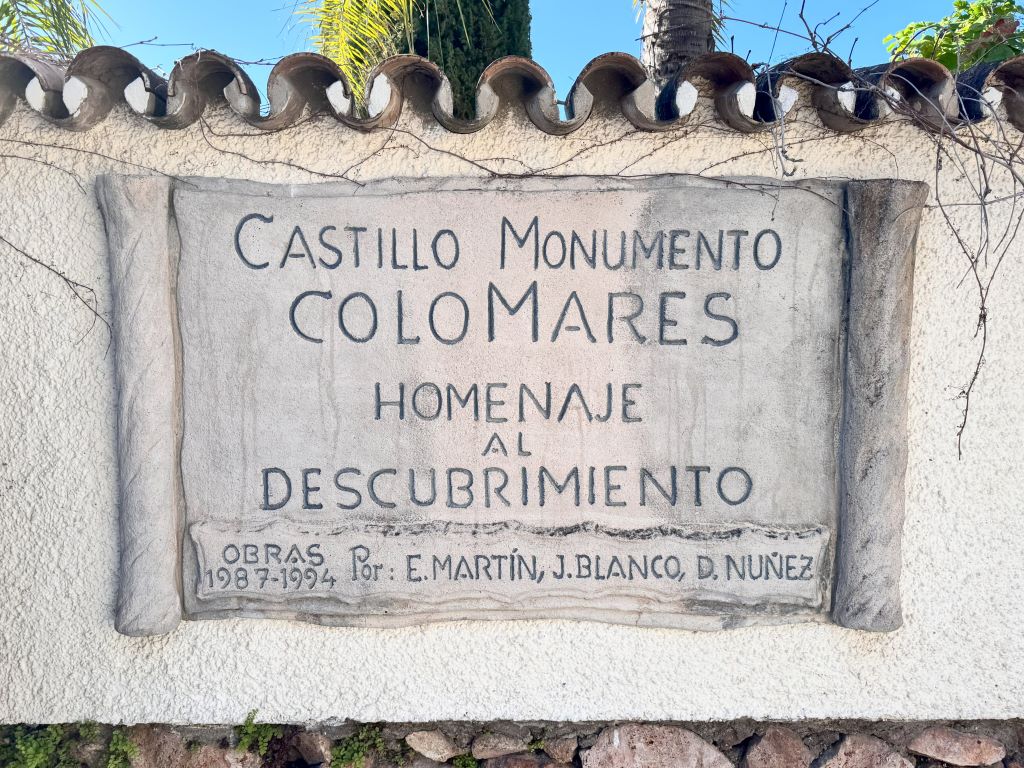
Castillo Colomares was built from 1987 to 1994 by Esteban Martín, a Spanish surgeon that lived in the USA, aided by two construction workers. Dissatisfied with how Columbus’ story was told abroad, with little to no regard to the Spanish prominence in it, Martín decided to move back to Spain and to dedicate his life to build a monument of living history showing Spain’s leading role in the discovery of America and the achievement of Columbus, which Martín suspected could well be Jewish and Spanish, after all.
The story of the construction is reminiscent of Don Quixote: the doctor always believed in his dream and reached to the government of Spain several times for financial support, unable to understand how the government failed to see the relevance of a monument celebrating the major Spanish historical achievement of all times. The castle construction was 100% personally founded by Dr. Martín, which built it himself with only 2 helpers over 7 years.
I believe Dr. Martín didn’t obtain the financial support he asked for because of the context of the time. Spain had just overcome more than 3 decades of Franco’s fascist dictatorship (1939-1975) and was back being a democracy. Other countries viewed it with sympathy, but were apprehensive, fearing the change could still be reversed. In that moment, the last thing Spain needed was to boast its nationalism and past supremacy, something Castillo Colomares highlights. Therefore, investing in the monument would not fit the image Spain wanted to project.
Martín continued working on his project until 1994, when he run out of funds. He died 7 years later, in 2001.
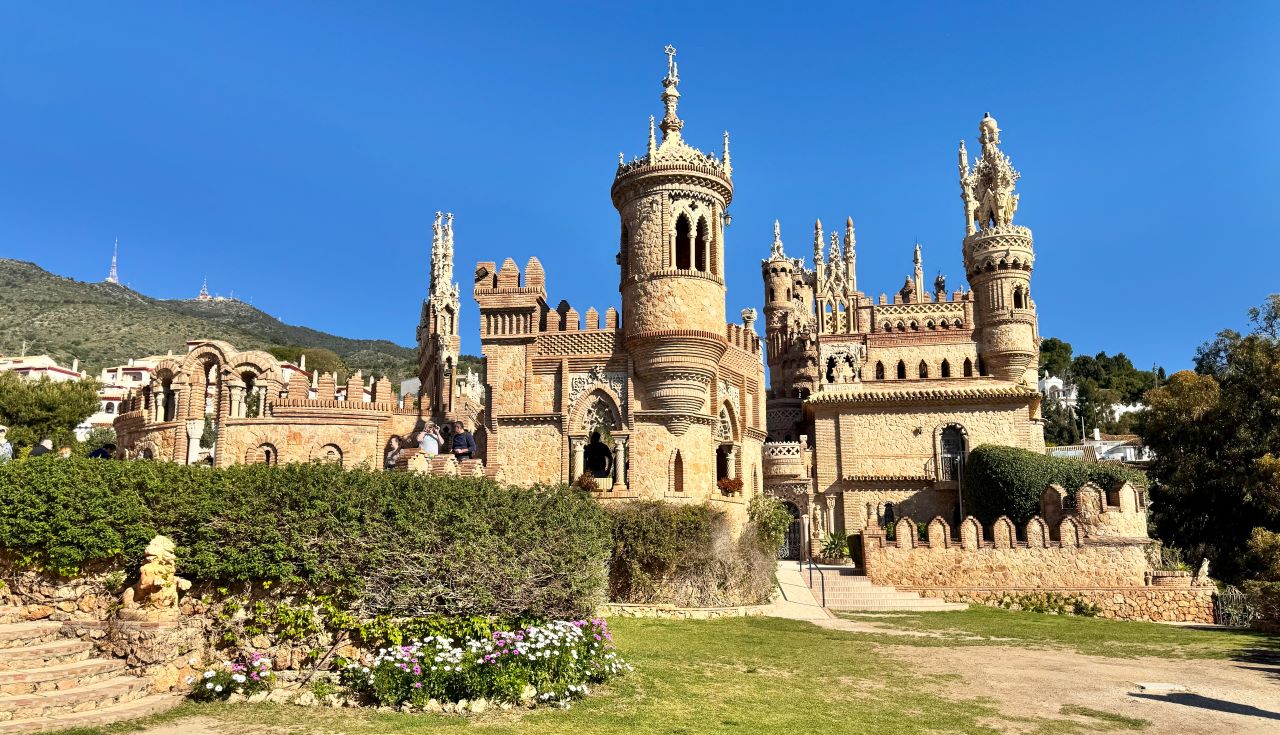
How to get to Colomares Castle
By bus: take the 103, 112, 121 or 126 towards Benalmadena Pueblo, up to the stop called Las Mimosas. From there, walk the path shown below, in light blue. Google Maps gives a different path, much bigger but maybe more accessible, as the one below has two sets of stairs. It is about a ten-minute walk.
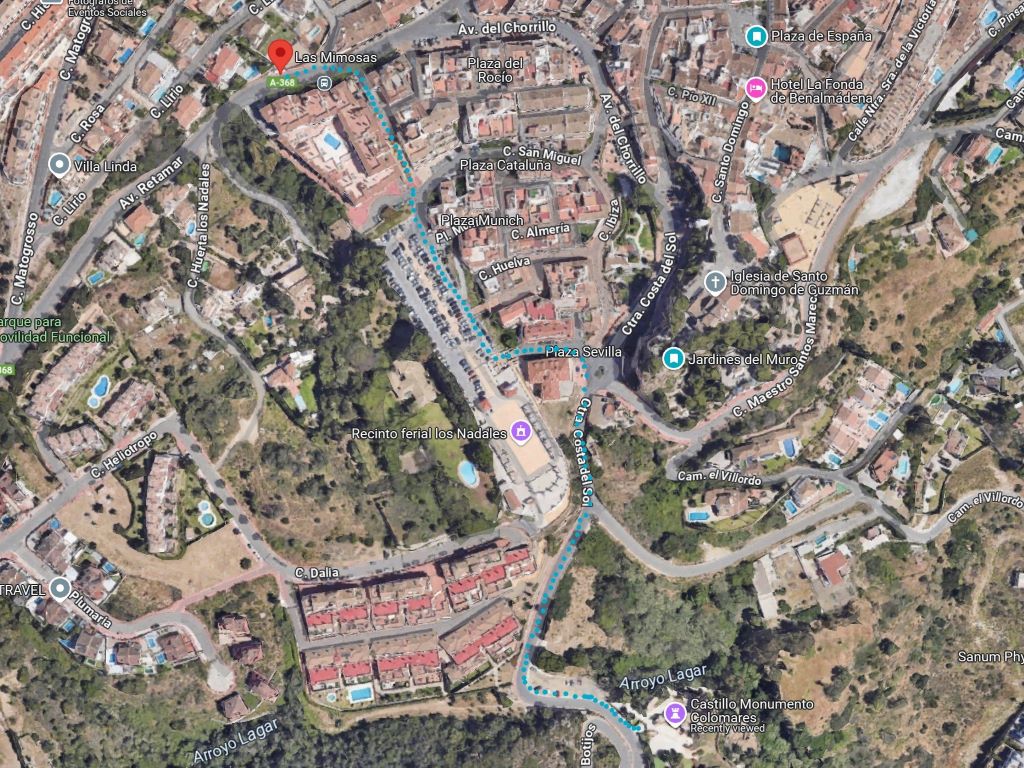
By car: there is an area right by Colomares Castle that is routinely used as a free parking by both buses and cars. This is a small area though, a bit improvised, and there is a chance that there won’t be any spots available. If that happens, you may need to park in the Pueblo and come on foot.
Prices and times
Visiting times vary throughout the year; the best way to know is to check Castillo Colomares website. In general terms, it is closed on Mondays and open on all other days from 10 am. The closing times vary depending on the season.
Entrance costs € 3 for adults and € 2 for children and seniors; tickets can be bought directly at the ticket booth by the entrance. Guided tours are available for groups of at least 25 people and need to be booked ahead. If you want to get a tour but don’t have such a large group, you can join a tour from Get Your Guide:
Where to go after the Castillo Colomares?
After visiting the Castillo, head up to Benalmádena Pueblo for some tapas and enjoy this lovely part of the town, full of charm, flowers and inviting squares. If you have been there already, you may want to go to the Butterfly Park and to the Stupa of Enlightenment, two interesting points not far from here, all part of Benalmadena Pueblo.
Conclusion
Christopher Columbus believed he had achieved the Indies; little did he know he had done much more – he had found a brand-new continent; a new world in many ways. Esteban Martín set his mind in building a monument of regal proportions to tell a story but went bankrupt before finishing. Much like Columbus, Martín did more than he envisioned – he lived and built a powerful narrative of persevering against the odds and achieving greatness despite of the expected outcome. Benalmadena’s Castillo Colomares tells not one, but two parallel, inspiring stories.
Visiting the castle is like seeing stories that we know from books coming to life in a beautiful set up. When in Benalmadena, don’t miss the opportunity to see the magnificent Colomares Castle, the castle that is not a castle, nor a restaurant, nor a hotel, but a monument, a real-life book and an inspirational place unique in size and history. A reminder that the craziest and highest aspirations can come to life (or almost, or even better than expected) through hard work and persistence.
